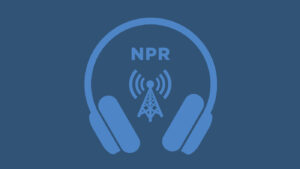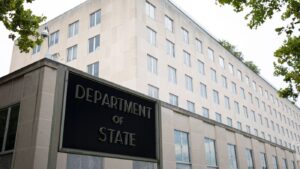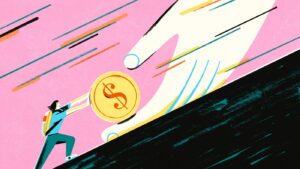
Eight million federal student loan borrowers are waiting for the courts to decide if their repayment plan is legal, while another 9 million are late on their payments and may be plunging toward default.
Illustration by Annelise Capossela for NPR
hide caption
toggle caption
Illustration by Annelise Capossela for NPR
The landscape of federal student loans is fraught with confusion and challenges.
Experts from diverse perspectives echo the sentiment. Beth Akers from the American Enterprise Institute describes the situation as “unprecedented uncertainty,” while Michele Zampini from the Institute for College Access and Success terms it “total disarray.”
The crux of the issue is that 8 million borrowers await a judicial decision on the legality of their repayment plan while 9 million others face the risk of default. This occurs amidst significant changes in the federal office managing student loans, which has been cut in half and could potentially move to a different agency.
NPR reached out to various student loan experts and the Trump administration to address borrowers’ pressing concerns.
Here are six key insights from our investigation into the current state of student loans.
1. 9 million borrowers may be heading for default
The suspension of federal student loan payments during the COVID-19 pandemic also halted the threat of defaults. However, as of October 1, 2024, the system’s clock has resumed, signaling potential default for those who fail to meet payment deadlines.
Failing to make payments for 90 days triggers a series of adverse effects, including credit bureau notifications. After 270 days, the borrower defaults, leading to potential wage garnishments and seizure of tax refunds by the government.
Internal data shows that, as of March 7, 4.2 million borrowers are over 90 days late, and nearly 5 million are up to 90 days behind.
This situation involves more than 20% of the nation’s 43 million borrowers potentially facing default.
Wil Del Pilar from EdTrust predicts a rise in delinquencies and defaults, while Scott Buchanan of the Student Loan Servicing Alliance advises borrowers not to ignore warnings from loan servicers.
NPR queried the department on these issues, but responses were limited.
2. The SAVE repayment plan is as good as dead
The legality of Joe Biden’s Saving on a Valuable Education (SAVE) repayment plan is under judicial scrutiny. Previously, 8 million people had enrolled, but the plan is now in limbo pending court decisions.
Jason Delisle from the Urban Institute suggests that the plan’s fate is sealed, either through legislation or judicial ruling.
Experts note that Republicans prefer to dismantle SAVE through their budget reconciliation bill to redirect savings to extend Trump tax cuts.
3. Income-driven repayment plans are finally back open
Legal uncertainties surrounding the SAVE plan affected other income-driven plans like PAYE and ICR, with the online enrollment form being temporarily unavailable.
The Department of Education has since restored access, allowing borrowers to enroll or re-certify their income.
During the month-long lapse, borrowers experienced increased payment demands due to the inability to update their income details.
Scott Buchanan explains that the form’s removal was a practical issue rather than a policy change.
4. Public Service Loan Forgiveness remains unchanged for now
The Public Service Loan Forgiveness Program remains intact, as any changes require congressional action.
Although the Trump administration proposed restrictions on eligibility, such changes will undergo a rulemaking process.
Borrowers in administrative forbearance won’t have their non-payment months count toward PSLF.
5. There’s likely more confusion ahead
The complexity of the student loan system is exacerbated by ongoing legal battles and administrative changes, making it difficult for borrowers to navigate.
The Federal Student Aid office has experienced staffing cuts, potentially affecting service quality.
Loan servicers generally maintain good customer service, though MOHELA has faced challenges in timely response.
Experts emphasize the importance of borrowers understanding their loans and considering available options.
6. With student loans potentially moving agencies, borrowers need to be their own advocates
The surprise announcement of the student loan program’s transfer to the U.S. Small Business Administration has added to the uncertainty.
The transition involves collaboration among the SBA, the White House, and Congress, as legal changes are necessary for administration shifts.
Borrowers are encouraged to stay informed and proactive in managing their loans, as the default clock continues to tick.









